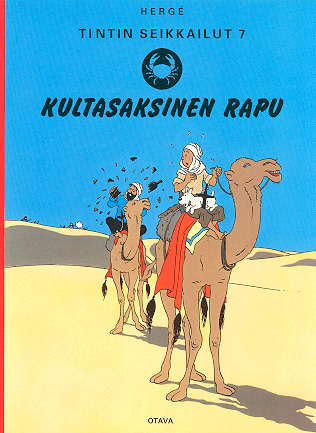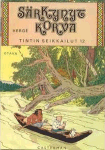| TINTIN LANGUAGES | |
| AFRIKAANS | |
| ALGUERES | |
| ALSATIAN | |
| ARABIC | |
| ASTURIAN | |
| BASQUE | |
| BERNESE | |
| BENGALI | |
| BRETON | |
| BULGARE | |
| CAMBODIAN | |
| CATALAN | |
| CHINESE | |
| CORSICAN | |
| CZECH | |
| DANISH | |
| DUTCH | |
| ENGLISH | |
| ESPERANTO | |
| FARSI | |
| FAEROESE | |
| FINNISH | |
| FRENCH | |
| FRIESIAN | |
| GALICIAN | |
| GALLO | |
| GAUMIAN | |
| GERMAN | |
| GREEK | |
| HEBREW | |
| HUNGARIAN | |
| ICELANDIC | |
| INDONESIAN | |
| ITALIAN | |
| JAPANESE | |
| KOREAN | |
| LATIN | |
| LUXEMBOURGER | |
| MALAYALAM | |
| NORWEGIAN | |
| OCCITAN | |
| PICARDY | |
| POLISH | |
| PORTUGUESE | |
| ROMANSCH | |
| RUSSIAN | |
| SERBO-CROAT | |
| SINHALESE | |
| SLOVAK | |
| SPANISH | |
| SWEDISH | |
| TAHITIAN | |
| TAIWANESE | |
| THAI | |
| TIBETAN | |
| TURKISH | |
| VIETNAMESE | |
| WELSH | |
| TOTAL 60 VERIFIED LANGUAGES | |
| RUMOURS | |
| MIRANDES | |
|
MONEGASCO |
|
| PROVENÇAL | |
| RUANDES | |
| MONEGASCO | |
| LINKS | CRAB MENÚ | CASTAFIORE MENU |
 |
FINNISH | |||||||||||
|
||||||||||||
|
There are
approximately 5 million speakers of Finnish. Besides being the
national language of Finland, it is spoken by about 200,000 people
in the northern Sweden, 70,000 people in the United States, 50,000
people in northwestern Russia.
Finnish is one of the few languages of Europe not of the Indo-European family. Like Estonian, spoken across the Gulf of Finland, it is one of the Finno-Ugric languages, which constitute the main branch of the Uralic family. The Finnish alphabet contains only twenty-one letters. There are thirteen consonants (d, g, h, j, k, 1, rn, n, p, r, s, t, v) and eight vowels (a, e, i, o, u, y, ä, ö). There is only one sound for every letter, one letter for every sound, and the stress is always on the first syllable. The language makes no distinction as to gender, and has no articles, either definite or indefinite. Despite these simplifying factors, Finnish is undoubtedly an exceedingly difficult language to learn. Aside from foreign borrowings (mostly from the Germanic languages), the long, often compound words hear no similarity whatever to their counterparts in the Indo-European languages. The Finnish word for "question," for example, is kysymys, while the word for "twenty" is kaksikymmentä. Even the Finnish names of different countries are often hard to recognize—e.g., Suomi (Finland), Ruotsi (Sweden), Tanska (Denmark), Saksa (Germany), Ranska (France), and Venäjä (Russia). The number of case forms for nouns is staggering—whereas German has four cases, Latin five, and Russian six, Finnish has no fewer than fifteen! In addition to the familiar nominative, genitive, partitive, and ablative, there are also the elative, allative, illative, essive, inessive, adessive, abessive, and several others |
|
PUBLISHER
|
|
ONLINE SHOPING
|
|
LINKS
|

|
|
I'VE GOT THIS ONE | ! WANTED! |